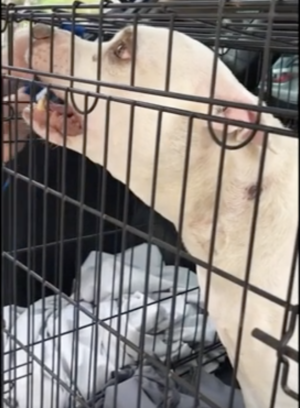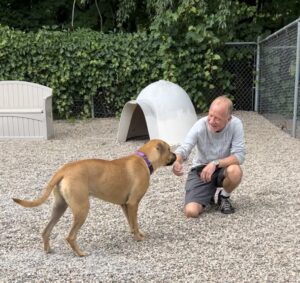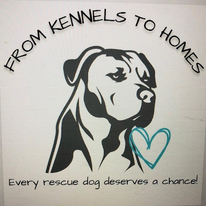What does Heal the Dog Look Like in Reality?
An interview with Canine Behaviorist & Trainer, Thommy Harley

Heal the dog. Canine behaviorist. Dog trainer. Have you ever wondered what all of this means?
I’ve had rescue dogs all of my adult life. Likely, you have as well. Mine are well behaved, as I suspect yours are, too. We all take in who and how many we can, because we love them with all of our hearts. We worry about the fate of so many in a state of flux, asking ourselves on any given Tuesday,
Who is helping the homeless dogs at-risk in our nation’s shelters and rescues?
One man I know who of, is Thommy Harley, Founder, Canine Behaviorist and Trainer, with the nonprofit, From Kennels to Homes. Curious about how he’s helping at-risk dogs in the South? I asked Thommy the details about the intimacy of his work. While spending most of his time at Miami-Dade Animal Services, Old Cowboy Animal Rescue, and responding where the need is made known, he hopes to serve even more dogs in harm’s way in need of healing.
Here’s what he had to say:
Canine Behavior and Work in Shelters: Part I
We dog lovers all know at least one trainer. What makes you different from other trainers? You’re working mainly in shelters, but don’t they have their own trainers?
There are a few shelters that have trainers, but certainly not enough. The uniqueness of what I do is I have a very good understanding of dog behavior; it’s my approach to everything. Most trainers out there are basically obedience trainers and don’t have a full understanding of behavior. They will basically work to correct a behavior without understanding. I have experience with aggressive, abused and neglected dogs.

I also have a lot of experience with dog introductions, which many of them do not.
What is it that you bring to the shelter environment that is unique and needed?
Canine Behaviorist. It’s imperative that more shelters have a behaviorist who can help these dogs. Shelter environments are extremely stressful. There’s a lot of fear for these animals. Having someone with experience who can understand all of the behaviors – whether it’s aggressiveness or fear from former abuse — with compassion – certainly helps.
Dog Introductions. One of my unique specialties is dog introductions. In most shelters, people are afraid to do dog introductions; they don’t understand the language of how these dogs are communicating. If they are doing introductions & play groups, a lot of times it can be very negative for the dogs due to lack of understanding. I’m a firm believer that their quality of life improves 100% if dogs are able to meet and play with each other.
To find people who are comfortable introducing dogs is very challenging.
Play Groups. Dogs are social creatures; they do like to be together. Getting dogs out into play groups results in stress reduction; they become less afraid of the world and develop confidence. Dogs playing together is a big factor. There are organizations that do this, but unfortunately, they use punishment methods – shock, prong and choke collars – these are not necessary.
When you walk into a shelter, what’s the typical situation that you encounter?
How is it that you help the shelter trainers on staff? Is it by taking on dogs that they cannot get to, or is it by taking on special cases for dogs that they would otherwise be giving up on?
The typical situation when I walk into a shelter is a lot of underpaid, overworked staff. Staff spends a majority of their time just feeding the dogs, cleaning kennels, walking the dogs and then repeating the process. So, beyond that, unless there are volunteers – which I always want there – these dogs don’t get the stimulation they need in going out on longer walks, walking with other dogs on long walks and so forth.
I explain to a shelter, it will work more efficiently and when we do these things, it will be better for the dogs. The lack of understanding of dog behavior makes staff reluctant to help these dogs and to work on their behaviors. Whether they’re fearful of the dog, etc., I try to instill confidence and show them – this dog lunging at the kennel, for instance, he doesn’t want to hurt me – if I go in calm and with compassion.
The dog understands that I just want to get him out.
Removing the Label. When I first walk into a shelter, I have a list of at-risk dogs. Quite possibly, the staff or trainer is fearful of them. They are very reactive in the kennels. It’s important to focus on these dogs as they may never be able to get out of their kennels. Then, they’re labeled aggressive. Labels is another thing that I like to remove.
Unfortunately, medical dogs and behavior dogs labeled aggressive are often euthanized; focusing on them helps them get out alive.
I also help staff by explaining the emotion behind the behavior – fear and distrust — and having the staff observe my handling of the dogs. I also offer tips to improve their quality of life – taking them out on mutual dogs walks safely…
